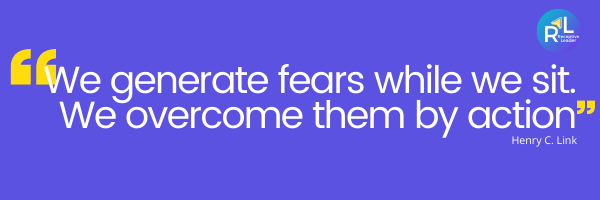If you’re looking for new ways to boost your team’s productivity and enthusiasm, you’ve come to the right place. Overcoming hurdles is great for team building when done together. As a leader, when you listen to your team’s needs and help them break through roadblocks, you’re building trust, confidence, and fellowship.
Here’s a framework to help you create a feedback loop with your team to make sure you’re helping them in ways that they need to succeed.
Be REAL Challenge
The Be REAL Challenge is a challenge to you, the leader, to collaborate with your team on things that are getting in their way. In this challenge, you’ll identify roadblocks, select the best change, take action, and measure your success. All 4 steps are critical in helping your team.
Outcomes you can expect from this exercise:
Positive support and attention for your team
Strengthened bond from focusing efforts on what is meaningful to your people
Improved productivity
Improved job satisfaction
How it works:
Receive
Ask each team member to come up with 3 things that will help them do their job better, make their job easier, or make them more productive. Have everyone choose at least 3 because some will be time-intensive to implement. This exercise aims to get a quick hit that will be impactful to morale and productivity.
The most important aspect of this exercise is to listen without projecting, correcting, or debating! Your goal is to get to what is most important to your team. From their perspective, what stands in the way of success or happiness? Ask clarifying questions such as, “Can you tell me more about that?” or “How does that impact you?” Again, you’re not trying to refute or correct what they say – you’re trying to figure out what they care about and what holds them back.
Evaluate
Evaluate all of the changes suggested by your team members. The goal in the Evaluation stage is to identify something that you can implement rather quickly, even if it’s just a partial version of the change required. This is something to kick-start the team and bring everyone closer to a shared goal and mission.
Do you see any similarities in the suggestions? If you can identify a common thread among them, great! That will make your decision easier.
You will be modeling the problem solving skills that you need them to ultimately develop. Once you have evaluated the options, review your findings with your team. Let them in on your decision making process so that they can learn from your expertise. You don’t have to share every response with them, but clue them into why you chose what you did.

Act
Time to implement!
Identify the metrics: Ideally, the change you are implementing will impact something that can be measured. But things aren’t always that cut and dry. If the change is trackable with a KPI, awesome. If not, that’s ok too. It can be tracked with regular feedback from your employee in your 1-1 meetings. Create a safe space for your employees to tell you if things are working or not.
Track with this tracking sheet: Tracking is king! Tracking is the only way you’ll be able to see a change through to the end. Keep yourself accountable for the action items. Know who needs to pitch in. Stay on top of it.
Take a team member along for the ride: You can pick a change champion from your team (who is the most invested in making this change happen?). Invite them to discussions with other functional leaders, have them help you identify the stakeholders, plan the path to success. If they have something to gain from this change, they’ll be invested in the solution. You’ll also be demonstrating effective leadership and change management throughout the process. When your employees can see you taking ownership, they can model ownership behavior in the future.
Learn
Find out: Was the problem truly solved? Was the roadblock truly removed? These answers should come from your employees’ perspectives. It doesn’t matter what you think – it matters how they see it.
Be open to their answers. If it didn’t work, teach them how to handle failure in the appropriate way. Evaluate what went wrong and how you could improve going forward. What did you learn? What did they learn?
Give it a shot and let me know how it goes!
